culture, hanafuda, heian era, koi koi, tradtional playing card games
How to Play Hanafuda-Traditional Japanese Playing Cards

Thalia Harris
Posted on September 09, 2022
Share:
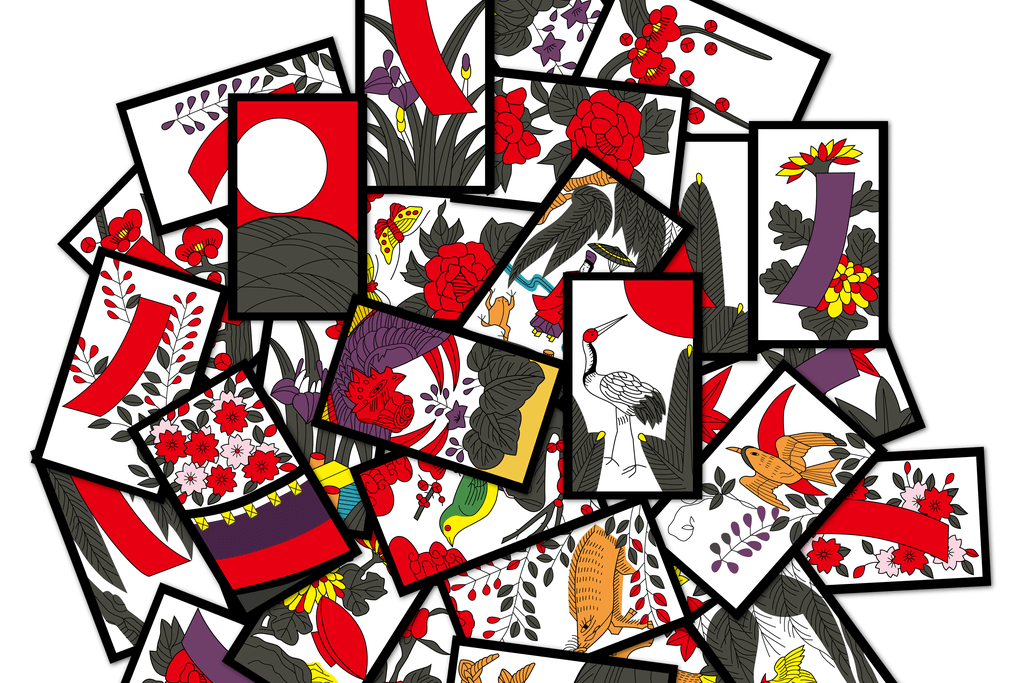
Hanafuda, also known as “flower cards,” is a form of traditional Japanese playing cards. While many traditional games and toys existed long before video games, hanafuda has a rich history dating back to the elegant and storied Heian Era. Read on to learn more about hanafuda’s origins, growing popularity, and how to play the classic hanafuda game, “koi koi.”
Mono-awase: The Predecessor to Hanafuda
The history of hanafuda begins in the Heian Era (794-1185). Back then, the aristocratic elite didn’t compete with playing cards but rather various collected objects. The most common items included fans, paintings, and especially shells. This was how to play hanafuda during those times.
Objectively, the goal of this game was to judge the quality and uniqueness of each object. They called this game mono-awase (ものあわせ literally “object comparison”). To play this game, the participants divided themselves into teams of two: “Left” and “Right.”
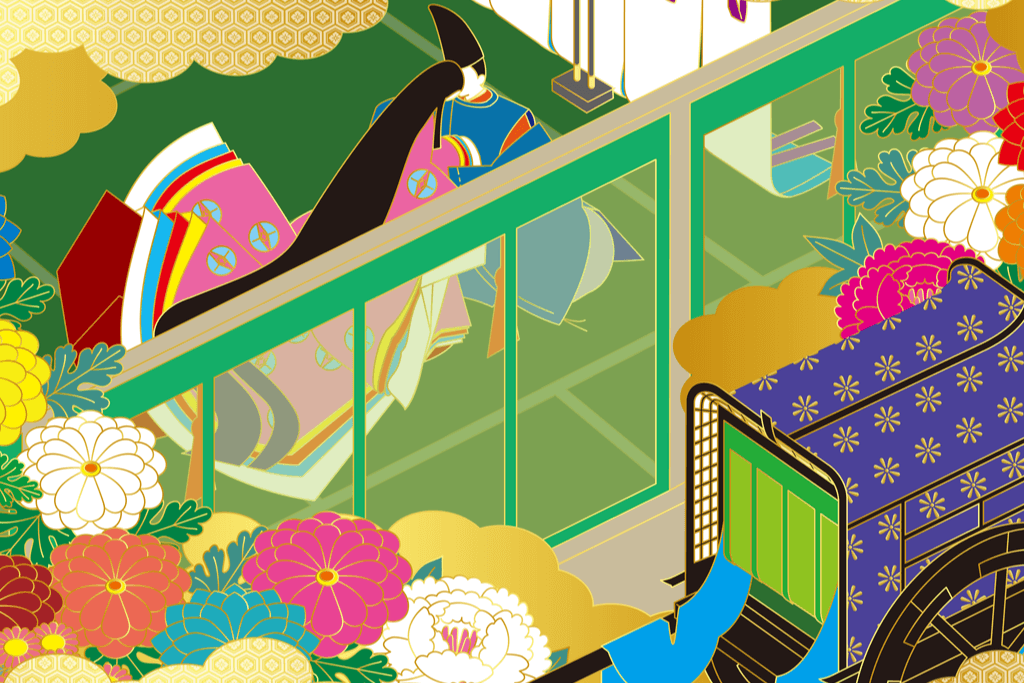
The left team usually consisted of higher-ranking members dressed in warm colors such as purple and orange. The right team dressed in colors such as blue and yellow. Both teams’ attire was extravagant, and the left team always started first.
To put it simply, mono-awase was a battle of wits. Each member of the team would present an object and have to speak of its beauty creatively. Some would do this in the form of a traditional waka poem, while others would sing.
A predetermined judge would give points to each team, depending on the quality of each member’s presentation. At the end of the game, the team with the most points won. This battle of wits and words would carry over into hanafuda, which wouldn’t debut until over four centuries later.
Looking to enjoy more authentic, traditional Japan? Check out Sakuraco. Sakuraco sends traditional Japanese snacks, sweets, teas, tableware, and more right to your door!
“Flower Cards”: The Rise of a New Pastime
In mono-awase, participants compare a variety of objects. However, kai-awase (貝合わせ, literally “shell-comparison”) maintained its presence throughout the centuries. At first, game participants used organic shells. Over time, the shells became more ornate.
Gilded shell sets, in particular, were popular bridal gifts during the Muromachi period (1336-1573). Artisans often painted them in gold and they were heavily circulated amongst the elite. Nevertheless, the common folk of the Edo period, along with the influence of Portuguese trading cards, would give rise to hanafuda (花札, literally “flower cards”).
Hanafuda cards combine kai-awase and hana-awase (flower comparison), except standardized in a 48-playing card set. People know it for its eye-catching art, perfectly organized by 12 suits, one for each month of the calendar year. These suits are depicted on the cards’ faces and include poetry ribbons and ornate illustrations of flowers, birds, etc.
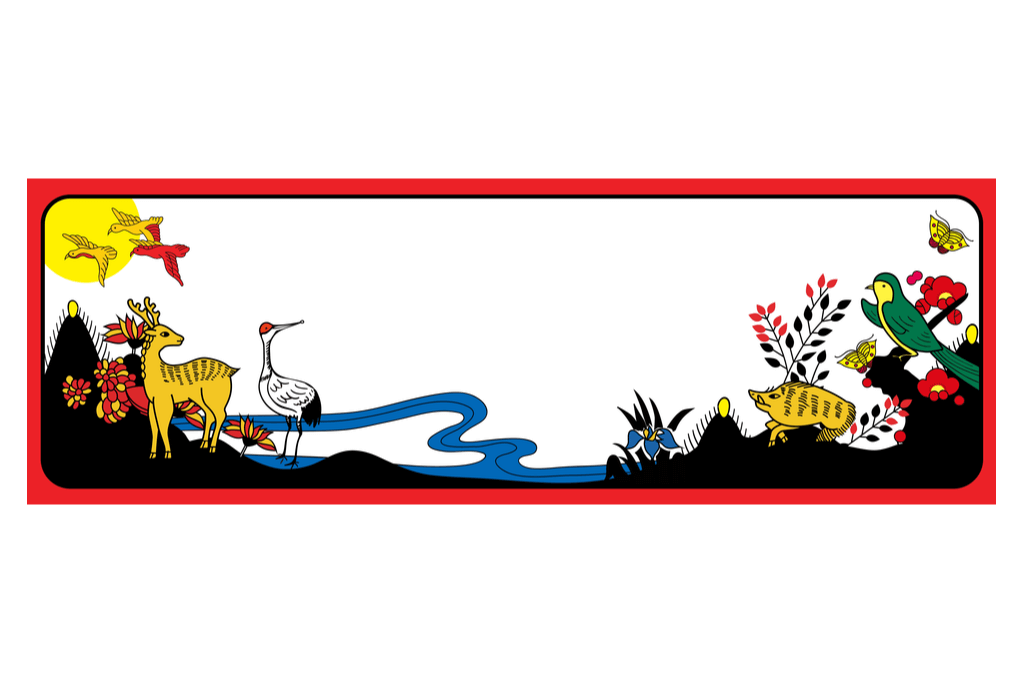
Despite its growing popularity, officials banned hanafuda during the Kansei Reforms (1781-1793). This was because the cards were used for gambling. Yet, it wasn’t just hanafuda cards that were prohibited. Playing cards of any origin (i.e., the now standard 52-card deck) was also banned.
However, the officials lifted the ban around 1885, during the Meiji Restoration. While it took a little more time for hanafuda to shake the reputation of gambling, it’s now a game that everyone can enjoy and learn to play.
Koi Koi: How to Play Hanafuda Matching Game
Koi koi (こいこい, literally “come on, come on!”) is the most popular game played with hanafuda cards. Simply put, two players must match cards based on their assigned category in a specific order.
Successful matches win points at the end of 6-12 rounds. The player with the most points at the end of the game wins.
Basic Rules
- The dealer or oya (親, lit. parent) is decided via rock-paper-scissors or dice roll. However, there is a more traditional way to do this.
- Everyone draws a single card. Whichever player draws a card from the earliest month is the oya.
- If both players draw from the same month, the player with the higher value card is the oya, while the other is the ko (子, literally “child”).
- The oya then deals eight (8) cards, face-up to the ko.
- They then deal the same number of cards to themselves, but face-down.
- Then the players add eight more cards to the “field” in two rows of four, face-up.
- Set the rest of the cards aside in a draw pile.
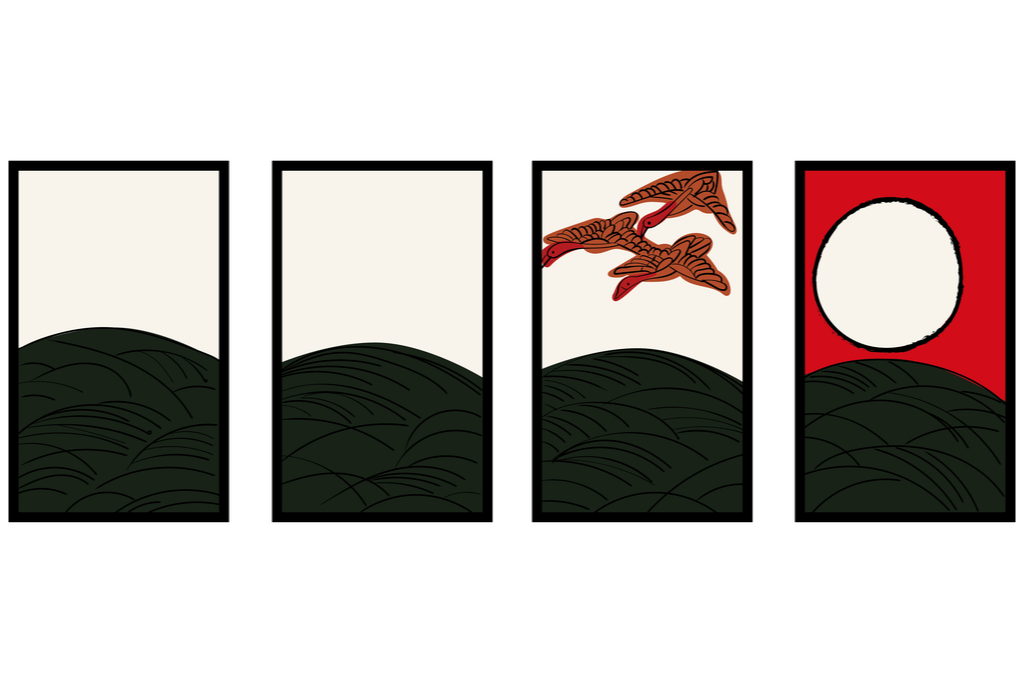
- Both players check all the cards in the field for “instant” wins.
- If all the cards match each other (aka “a full month”), the players cancel the round and deal the cards once more.
- If ¾ of a month has been dealt, then three of the cards are set aside in one stack, and both players reveal a card. Whichever one plays the final card wins that month.
- The game then begins. In turn, each player matches a card in their hand with one in the field from the same month.
- They can also add a card that matches none of the cards
- If there are any matches, the player wins that match.
- However, if they want to double down, they can say koi koi and receive another card to get multiple matches.
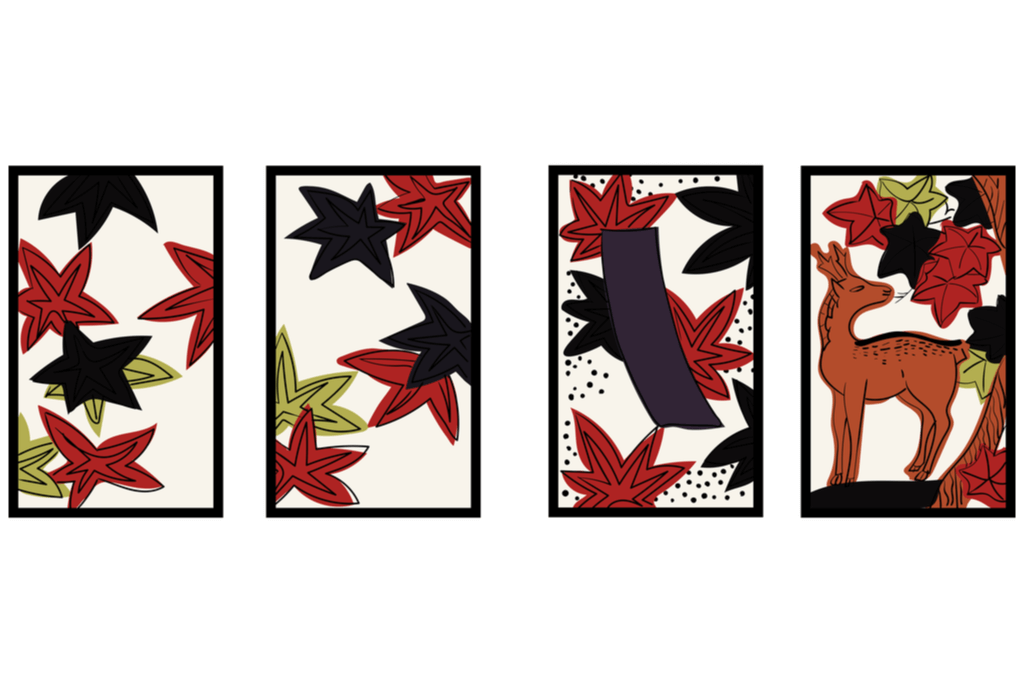
There are many variations to these rules, but this is how Japanese people use hanafuda cards to play koi koi at its most traditional level.
Where can I buy hanafuda cards?
Okuno Karuta Shop (Jimbocho, Tokyo)
Jimbocho is a central Tokyo neighborhood famous for having over 150 bookstores. Most stores mainly specialize in antique and secondhand books, giving the neighborhood a traditional vibe! Book lovers from across the country and even abroad come to JImbocho to add to their ever-growing collections! One of the most famous stores here is Okuno Karuta Shop.
Okuno Karuta Shop not only specializes in hanafuda cards, but it also has an immaculate card museum on its second floor! Here, you can see many hanafuda cards, which feature flowers, seasons, and other gorgeous motifs.
Tokyu Hands (Shibuya, Tokyo)
Tokyu Hands in Shinjuku offers a great selection of hanafuda cards for purchase. These traditional Japanese playing cards are adorned with beautiful illustrations of flowers and animals, making them fun to play with and a unique souvenir to bring back home.
Prices for hanafuda cards at Tokyu Hands vary depending on the quality and design of the cards, but they generally range from around ¥500 to ¥2,000. Whether you’re an avid hanafuda player or simply looking for a beautiful keepsake from Japan, Tokyu Hands is worth a visit.
Don Quixote, aka “Donki” (Nationwide)
Don Quixote, a popular variety store chain in Japan, also offers a selection of hanafuda cards for purchase. These traditional Japanese playing cards are popular among locals and tourists, and Don Quixote provides an affordable option for those looking to buy them.
Prices for hanafuda cards at Don Quixote range from around ¥300 to ¥1,000, making them an excellent budget-friendly souvenir. While the selection may not be as extensive as at other stores, Don Quixote is a convenient option for travelers in Japan.
How to Play Hanafuda: Conclusion
Playing hanafuda cards offers one of the most traditional Japanese recreational experiences. Currently, most people in the world connect Japan to video games. Yet it is this game, borne from an ancient battle of wits and object comparisons, perfectly encapsulates the elegant simplicity of traditional leisure in Japan.
Do you own a set of hanafuda cards? Do you know how to play hanafuda now? Have you ever played koi koi before? Let us know in the comments below!

Discover authentic flavors with Sakuraco
Get Sakuraco 
2 Responses

Discover authentic flavors with Sakuraco
Get Sakuraco 
Related Articles

Mount Fuji Tour: Great Adventures Await You This Summer!
Mount Fuji is one of the most famous landmarks in Japan. People worldwide visit to see its beauty and enjoy exciting yearly outdoor activities!

Mikoshi: Why Are These Portable Shrines So Important?
Japan’s summer festivals are known for their energy, color, and tradition. And at the heart of many lies the mikoshi.

Takachiho Gorge and More Natural Wonders from Kyushu
Kyushu is the southernmost main island in the Japanese archipelago. It is most well-known for its food, but is less famous for its natural beauty. The island contains many landscapes, including serene waters, soothing hot springs, and dramatic rock formations like Takachiho Gorge.

Kitakyushu to Kagoshima: An Amazing Kyushu City Tour!
Visiting these cities can help you understand more deeply how the past and present come together in everyday life. So let’s explore five of the most beloved cities on this fantastic island, starting from Kitakyushu!




I want to try the cards with fruends! It siunds like sheer delight!
That sounds like a great idea! Have fun 😆